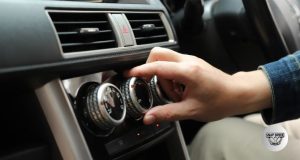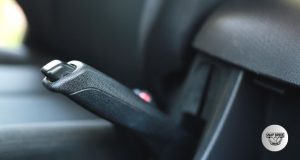Last Updated on October 16, 2025 by Aaron Blake
Have you ever wondered why some cars have manual windows while others come with power windows? Knowing the difference between these two can help you make smarter choices when buying or maintaining your vehicle.
Whether you want to save money, enjoy convenience, or understand how your car works, this guide will clear up the confusion. By the end, you’ll see which option fits your needs best—and why it matters for your daily drive. Keep reading to discover the key differences that can impact your comfort and control behind the wheel.
Contents
Manual Windows Basics
Manual windows use a simple hand crank to open and close car windows. They work without power or electricity.
This system has been around for many years and is still found in many vehicles today.
How Manual Windows Work
Manual windows have a crank handle inside the car door. Turning the handle moves gears inside the door frame. These gears push the window glass up or down.
The mechanism is fully mechanical and does not need any electrical parts to function.
Advantages Of Manual Windows
- They are less expensive to repair and maintain.
- Manual windows are reliable because they have fewer parts.
- They do not drain the car battery or rely on electrical systems.
- Manual windows work even if the car’s power system fails.
Common Use Cases
| Use Case | Reason |
| Economy cars | Lower cost and simple design |
| Older vehicles | Original equipment and easy repair |
| Off-road vehicles | Reliable in rough conditions |
| Spare or secondary vehicles | Less expensive maintenance |

Credit: www.amazon.com
Power Windows Features
Power windows are common in most modern cars. They let you open and close windows with buttons.
These windows use electric motors instead of a hand crank. This makes them easier to use.
Operation Mechanism
Power windows work using an electric motor and switch. The switch sends power to the motor.
The motor moves the window up or down through gears and linkages. It stops when the button is released.
- Button press activates electric motor
- Motor turns gears connected to the window
- Window moves smoothly up or down
- System stops when the button is let go
Benefits Of Power Windows
Power windows are easy to use. You just press a button to move the window.
They add safety by allowing the driver to control all windows. This can prevent accidents.
- Convenient and fast window control
- Improved safety for driver and passengers
- Better sealing against rain and wind
- Can include features like auto up/down
Typical Applications
Power windows are found in most cars, trucks, and SUVs. They are standard in many models.
Luxury vehicles often add extra functions like one-touch windows and child safety locks.
- Passenger cars and family vehicles
- Trucks and utility vehicles
- Luxury and premium car models
- Some buses and commercial vehicles
Comparing Reliability And Maintenance
Manual and power windows are common in vehicles. Each type has its own reliability and maintenance needs. Understanding these can help in choosing the best option for your car.
This comparison focuses on durability factors, repair and upkeep, and cost implications of both window types.
Durability Factors
Manual windows use simple mechanical parts. These parts tend to last longer because they have fewer points of failure. Power windows rely on electric motors and switches. These parts can wear out faster, especially if exposed to moisture or dust.
Manual windows are less likely to break from small impacts because they have fewer fragile parts inside the door. Power windows can be more sensitive to shocks and electrical issues.
Repair And Upkeep
Manual windows are easier to fix. Most repairs involve replacing simple parts like the crank handle or gears. Power windows require checks on electrical wiring, switches, and motors.
- Manual window repairs usually take less time.
- Power window repairs may need special tools or skills.
- Manual windows rarely need electrical diagnosis.
- Power windows can have issues like motor failure or switch problems.
Cost Implications
| Type | Initial Cost | Repair Cost | Maintenance Frequency |
|---|---|---|---|
| Manual Windows | Lower | Low | Rare |
| Power Windows | Higher | Moderate to High | Occasional |

Credit: www.amazon.com
User Experience And Convenience
Manual and power windows affect how drivers and passengers use their cars. Both types offer different levels of comfort and ease. Understanding these differences helps choose what suits your needs.
This article focuses on user experience and convenience. It looks at ease of use, safety, and vehicle value with manual and power windows.
Ease Of Use
Manual windows need you to turn a crank to open or close the window. This takes some effort and time, especially for back seats. Power windows work with a button press and move quickly.
Power windows are easier for people with less hand strength or mobility issues. They also allow the driver to control all windows from one place. Manual windows require each passenger to operate their own window.
- Manual windows require physical effort
- Power windows operate with a simple button
- Driver can control all power windows
- Manual windows need passengers to adjust their own
Safety Considerations
Power windows often include safety features like auto-reverse. This stops the window if it senses an obstacle. Manual windows do not have this feature and can be risky if closed quickly.
Power windows also let the driver lock the controls to stop children from opening them. Manual windows do not offer this control. This makes power windows safer in many situations.
- Power windows may have auto-reverse for safety
- Driver can lock power window controls
- Manual windows lack automatic safety features
- Manual windows may be harder to control with children
Impact On Vehicle Value
Cars with power windows often have higher resale value. This is because buyers expect modern features for comfort and convenience. Manual windows are seen as basic and less desirable.
Some older or classic cars keep manual windows to stay original. In these cases, manual windows may not lower value. For most vehicles, power windows add to the appeal and price.
- Power windows usually increase resale value
- Manual windows are less attractive to most buyers
- Classic cars may keep manual windows for authenticity
- Modern buyers expect power window features
Credit: www.crvownersclub.com
Frequently Asked Questions
What Are The Main Differences Between Manual And Power Windows?
Manual windows use a hand crank; power windows work with an electric switch.
Which Window Type Is Easier To Repair, Manual Or Power?
Manual windows are simpler and cheaper to fix than power windows.
Do Power Windows Consume More Car Battery Than Manual Windows?
Power windows use some battery power only when operating, unlike manual ones.
Are Manual Windows More Reliable Than Power Windows?
Manual windows have fewer parts, making them often more reliable over time.
Which Window Type Offers Better Convenience For Daily Use?
Power windows provide easier and faster window control than manual ones.
Conclusion
Manual and power windows both serve the same purpose. Manual windows need physical effort to roll up or down. Power windows work with a button, making them easier to use. Each type has pros and cons. Manual windows are simple and less costly to fix.
Power windows add comfort and convenience but may cost more. Choose based on your needs and budget. Knowing the difference helps you decide better. Both types keep your car safe and functional. Simple or electric—both have their place in cars today.





